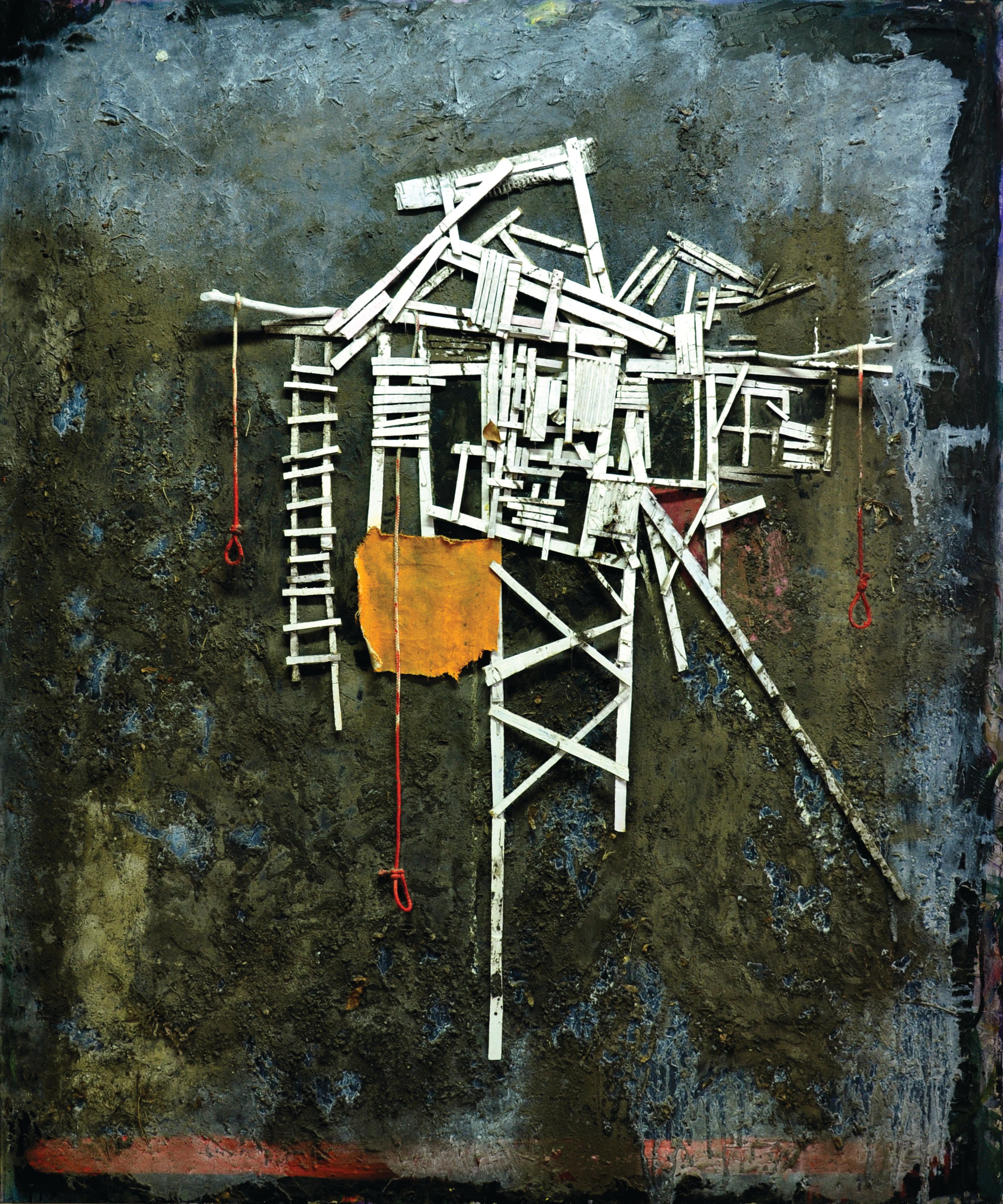Shelter in Place
Randall Mosman’s houses evoke local color and worldliness.
It was a moment at which a work of art became eerily prescient. As Harvey hit, Heights Boulevard transformed into a turbulent river ready to swallow up any outdoor art nearby. But, near 19th Street, a small sculpture of a whitewashed house accessible only by a crooked ladder, raised six feet above the ground, remained standing, to the relief of the Houston artist who built it, Randall Mosman.
The sculpture, which was aptly titled “Above the Muddy Water” long before Harvey, had been selected for the Heights Boulevard Sculpture Project by Mosman’s mentor and friend Gus Kopriva, a revered Houston gallerist. An exhibit of Mosman’s paintings — some new, some old, some never shown before — will be up at Kopriva’s Redbud Gallery Feb. 3-26.
“It didn’t start until I was living in Vietnam,” says Mosman when asked about the houses in varying states of disrepair that recur in his work. “I saw these houses out in the rice fields which looked like swamps. I had this moment where it felt like being out in the bayous with my cousins. There was a connection to something I’d seen before, but in a completely different environment.”
Along with water, the history and iconography of the Deep South haunt the paintings and mixed-media works of Mosman, a New Orleans-born world traveler now based in Houston. Forests, those mysterious houses, dogs (Mosman and his wife, artist Tarina Frank, own two Peruvian Hairless dogs, Odin and Floki) and, most chillingly, dangling nooses, emerge from the layers of thickly applied oils, dirt, sticks, bits of wood, fabric and string, like memories that won’t stay buried. Though his work is provocative, Mosman is more at ease talking about his favorite Scandinavian jazz musicians than any specific “meaning” in his art.
“This is my language,” he says. “I can tell what I want to tell through that form.”
